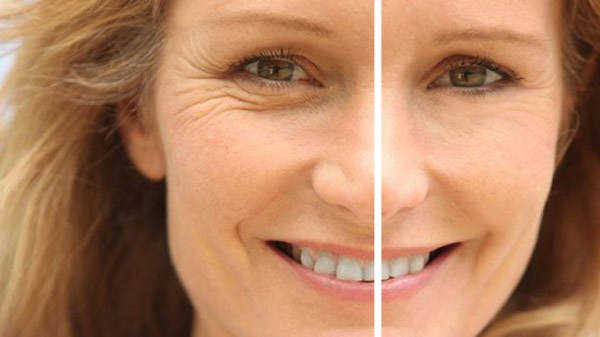What is botulinum toxin?
Botulinum toxin is a drug. It is used in the treatment of many diseases. It was noticed that it eliminates lines while treating strabismus and it started to be used in the aesthetic field. It works by stopping the muscles from working. You can’t frown and your eyebrow line disappears. Since your forehead muscles don’t work, forehead lines disappear. Since your muscles around your eyes don’t work as much when you laugh, crow’s feet lines disappear.

What does it do?
It is mainly used in wrinkle removal due to mimic movements, eyebrow lifting, reduction of sagging on the face, and treatment of regional excessive sweating.
How is it effective?
Acetylcholine (ACh) is an important substance that provides movement in muscles. Botulinum toxin binds to the proteins that provide ACh secretion in the muscles. Thus, it chemically prevents muscle movement by inhibiting ACh secretion. The effect of reducing muscle work is not permanent. After approximately 3-5 months, a new nerve-muscle structure develops and muscle movement begins again.
For which cosmetic complaints can it be used?
- Forehead and eyebrow mimic wrinkles
- Eye area wrinkles
- Neck area wrinkles
- Cheek sagging
- Underarm, hand and foot sweating
How long does it take to apply?
The procedure takes approximately 10 minutes. The medication is administered to certain points in the treatment area with the help of 31g thin needles. There may be swellings the size of a lentil in the areas where the needles are applied. These swellings regress within half an hour.
How often should it be applied?
It can be repeated every 4-6 months.
Is there any pain during the application?
Since the amount is small and the needles are thin and are applied only to the area where the wrinkle will be removed, there is very little discomfort. It does not require anesthesia.
When are the results seen?
The effect starts 3 days after the application and becomes fully apparent in 7-15 days.
When should it be checked?
Approximately 1-2 weeks after the application, the inadequate areas or asymmetries are corrected by checking.
How long does the effect last?
The treatment effectiveness can last for 3-5 months.
As the effect of botulinum decreases, the lines become lighter and appear. They are not as deep and obvious as before.
What should be considered after the procedure?
After the procedure, you should not lie face down and bend forward for 4 hours. Injected areas should not be massaged, and procedures such as skin care should be postponed for at least 10 days after toxin application.
Who is it not applied to?
Botox effectiveness decreases in those taking aminoglycosides, Ca channel blockers (blood pressure medication), penicillamine, quinine, magnesium, cyclosporine. It is not applied to those with muscle diseases, pregnant and breastfeeding women. If there is infection or eczema in the area to be treated, the application is not performed.
In some people, mimic lines are visible even at rest. Filling procedures provide better results than botulinum applications in this group of people. Because botulinum eliminates lines caused by movement. It is insufficient for deep lines that exist even when there is no movement, so filling should be applied to such lines.
If the patients are over 65 years old, the possibility of the drug passing to muscles in other places instead of the muscle to be treated increases as their muscles relax. Thus, the possibility of eyebrow and eyelid drooping increases.
What are the side effects?
Botulinum applications have very few side effects. Many patients can return to their daily lives and work immediately after the treatment. Most often, there may be temporary bruising the next day after the procedure. There may be minimal asymmetry in the eyebrows and face. This situation is easily resolved in the check-up performed one week after the procedure. Temporary eyebrow, eyelid drooping, and double vision may be possible in procedures around the eyes and forehead. These very rare side effects regress on their own within 1-2 months. While waiting for the effect of the procedure to wear off, the discomfort caused by the side effects can be relieved by using special eye drops.
Can the application sometimes be ineffective?
Sometimes the dose of Botox administered may be insufficient. Very high doses may be required, especially in men, in the line between the eyebrows.
Antibodies may develop against Botox, rendering the procedure ineffective. This is more common in neurological patients who receive high doses. In order to prevent the development of antibodies in cosmetic procedures, procedures should not be performed at intervals of less than 3 months and correction procedures should not be performed very frequently in between.
